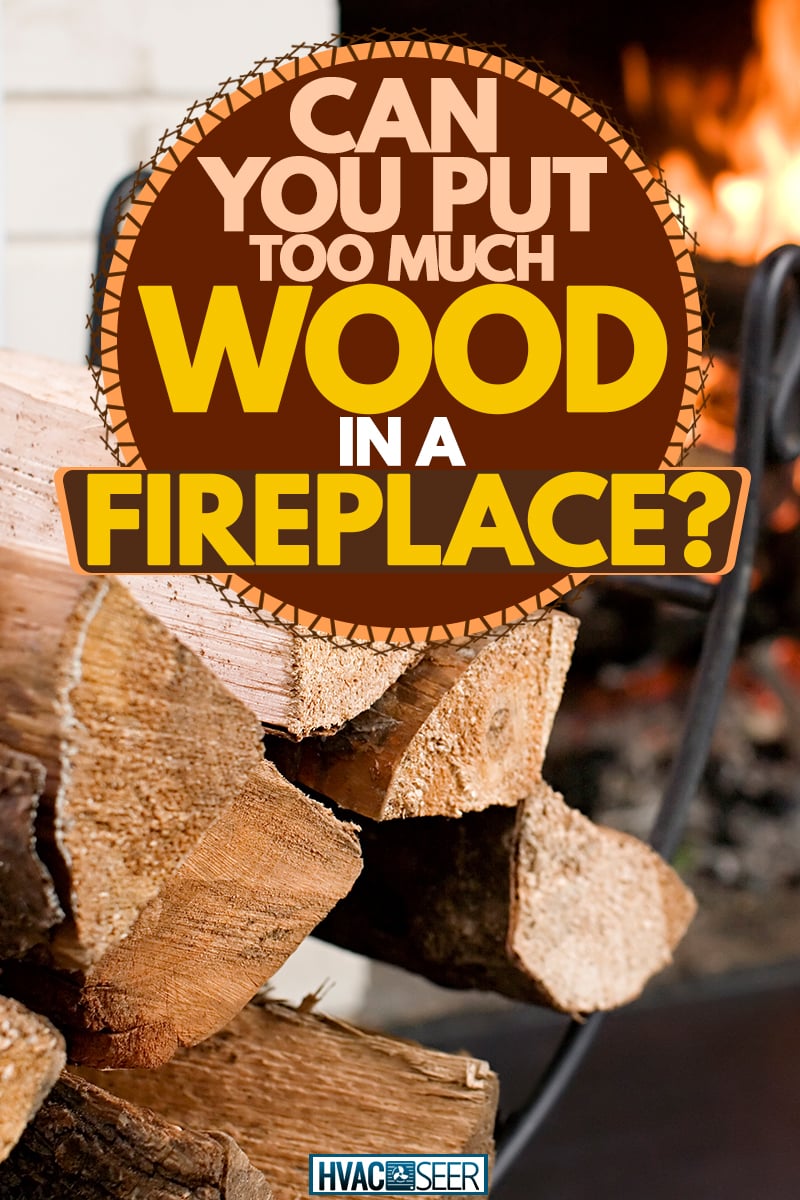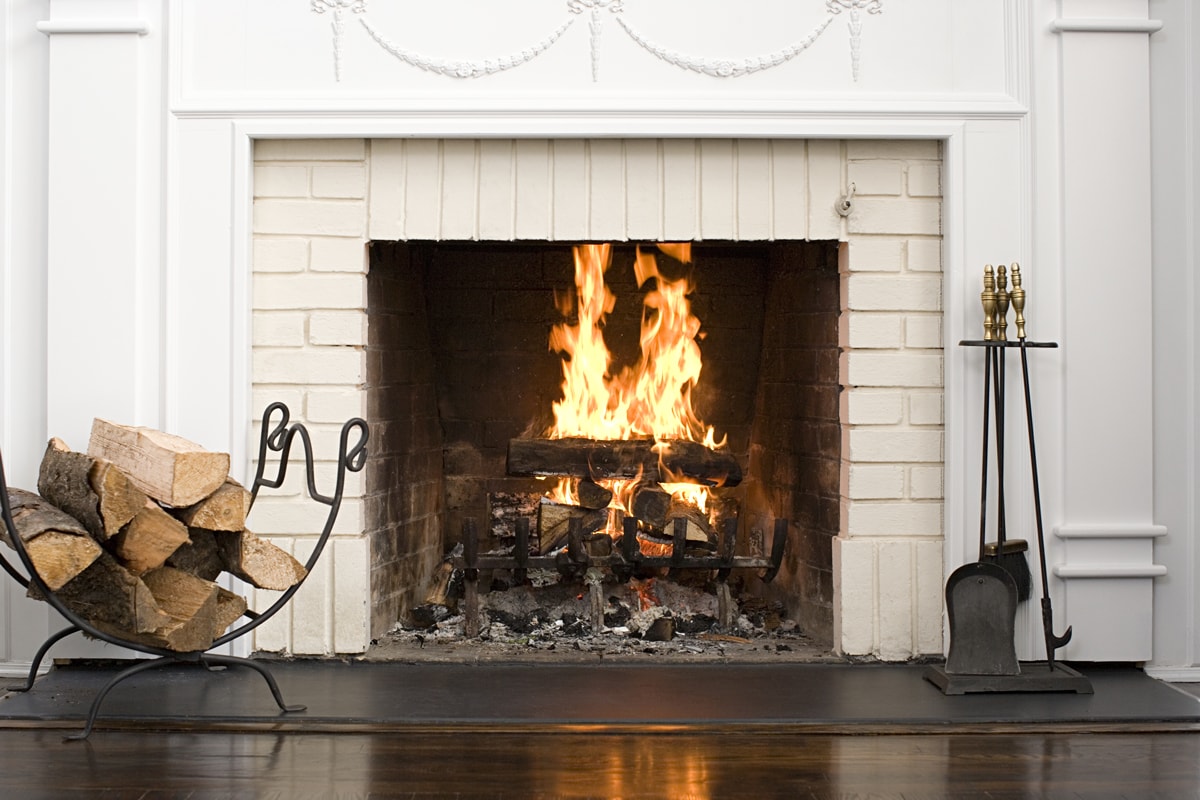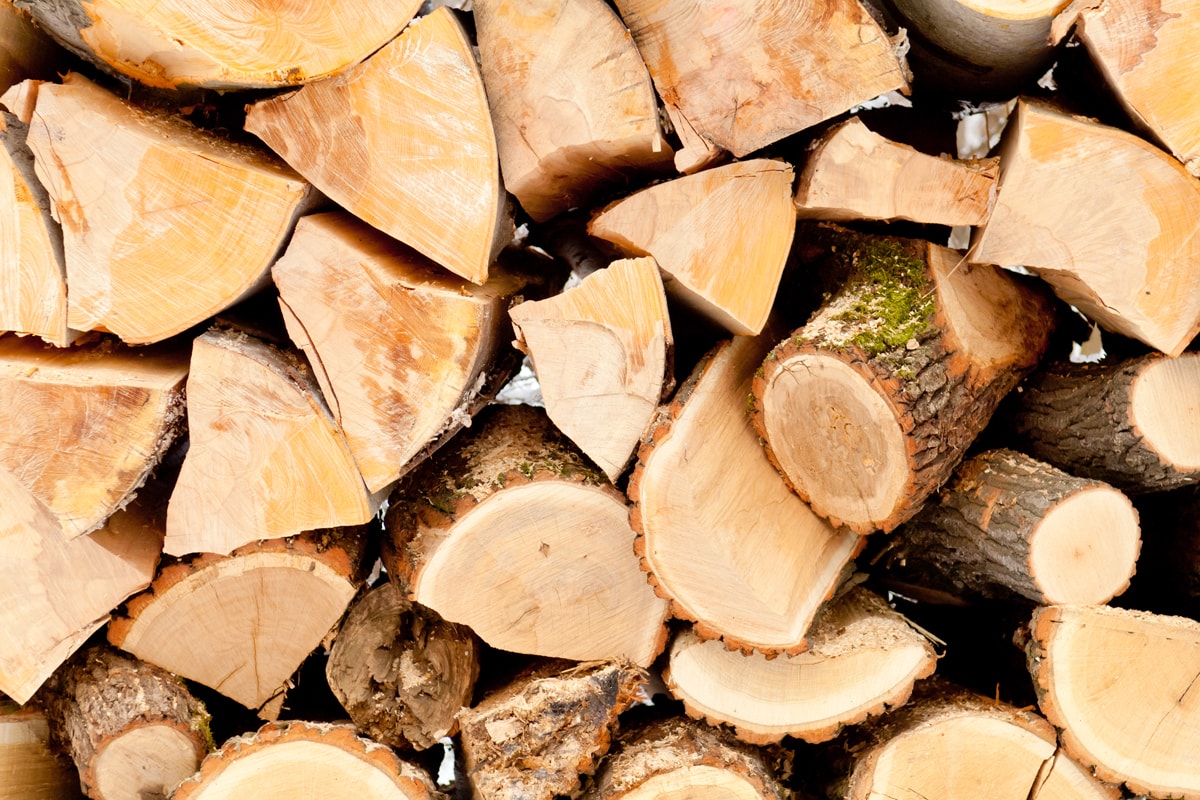Worried about putting too much wood into your fireplace? Are you wondering if this will cause you major problems or what the drawbacks are to doing so? Worry no more! With the in-depth research done on our end, we'll address any concerns you may have and teach about the proper wood to use.
Simply put, yes, it's possible to put too much wood in a fireplace. It can cause immediate and future problems. For your safety, build smaller fires, which are actually hotter. By building a smaller fire and not putting too much wood in, you can enjoy a less smokey, warmer fire that is safer.
Now, learning that you can overindulge with wood in a fireplace probably opens up more questions that you have. Continue reading to understand more about why less wood is better, how to prevent a chimney fire, and what woods to use and what woods to avoid!

Small Fires Are Better Than Larger Ones
While the opposite may seem true, larger fires don't mean longer-lasting ones, especially when it comes to indoor fireplaces. "Less is more" is a good saying for creating a fire in your fireplace.
One thing that can happen if you put too much wood in your fireplace is that you actually end up smothering the fire. This doesn't give it enough room to breathe. You'll just create more smoke and less heat, which doesn't benefit you in any way.
Another issue that arises with more wood in a fire is the ability to create more carbon monoxide. That leads to more of this gas released back into your home. So, not only does more wood make the fire colder and smokier, it creates an unsafe environment in your hsome that has the potential to cause damage to you and your family.
More wood doesn't equate to longer-lasting fires. It means more smoke, minimal heat, and an increase in dangerous gas production that can linger in the home.
How Many Logs Should You Put In Your Fireplace?

There is no set number of logs that are appropriate to put into a fireplace. When it comes to how many logs to use in your fireplace, you have to consider the size of the fireplace. Another thing to potentially worry about is log size.
For the sake of explanation, this is based on standard logs that come in a bundle at the store. Depending on how you choose to build your fire, four to six logs should be sufficient in creating a warm, long-lasting fire in your fireplace. If your fireplace is tall, then you can stack more if there is room. But don't go overboard.
Two excellent log-stacking techniques to try include:
- Lean-to
- Log Cabin
Lean-T0
The lean-to works better for people who have smaller fireplaces, as it doesn't get very high and uses 3-5 logs. You place one log down horizontally and then lean anywhere between 2-3 logs against that.
This simple stacking style creates a cave for the heat to nestle while not going overboard with the number of logs used. So, if you have a smaller fireplace, this will be the best technique for you to use while creating a stable fire.
Log Cabin
Compared to the lean-to, the log cabin technique is a little more complicated and works better in bigger fireplaces. You place two logs vertically a little ways from one another, then you place two logs perpendicular to those on top, creating a square shape.
If you have a tall fireplace, you can add another layer, meaning those two logs would face the same as the first pair. This technique uses 4-6 logs, depending on the size of your fireplace.
How To Prevent A Chimney Fire
To prevent and avoid chimney fires, here are a few things you can do to keep everyone safe:
- Have your chimney inspected and cleaned regularly (at least once a year)
- Use seasoned wood only
- Build smaller fires as they produce less smoke
- Never burn cardboard, wrapping paper, or Christmas trees
These are just a few measures you can take to avoid a chimney fire!
As with other machines that use fire, such as grills, a clean space will prevent unwanted and unnecessary dangers from arising. At least once a year, you should have your chimney cleaned and inspected if you use it often.
While most people think cardboard helps start a fire, you want to avoid this "trick" with an indoor fireplace. Outdoors, that is more acceptable. But indoors, it can lead to a chimney fire because of the unruly and unpredictable nature of the fire.
What Types Of Wood Should Not Be Burned In A Fireplace?

Unlike an outdoor fire pit, there are restrictions for what you can burn when it comes to an indoor fireplace. The first and most obvious type of wood to not use is anything laying around the yard. Typically for outdoor fire pits, people grab what they can from their surroundings to help. While that works outside, that will not work for indoor fireplaces.
Never use unseasoned wood when using your indoor fireplace. Unseasoned wood is freshly cut wood that has not been properly stored. When wood is freshly cut, almost half of its weight comes from water. Depending on the type of wood, it can take anywhere from six months to two years for it to sit and become seasoned.
Ultimately, unseasoned wood is harder to light on fire, requires more vigilance and attendance, and doesn't create as much heat. Wet wood burns colder, so freshly cut, water-filled logs will only waste your money in the long run. If the goal is to relax and not have to worry about your fire dying, then stay away from unseasoned wood.
Some woods, such as pine and spruce, are known to be softer and don't take as much time to season. On the other hand, hardwoods like oak take longer to season since they are denser. For longer-lasting fires, dense wood is preferable. In the end, dryness is more important than hardwood versus softwood.
What Type Of Wood Is Best For An Indoor Fireplace?
Seasoned wood is the best type of wood for an indoor fireplace. Seasoned wood is wood that has sat in a dry environment for a while and lost the water that resided in it since it was freshly cut.
Although it's more expensive than unseasoned wood, seasoned wood will actually save you money in the long run. You will be able to create sufficient fires that will burn longer with less assistance and ones that will actually create a warm atmosphere in the room your fireplace is located.
When storing firewood outside, make sure to cover it and protect it from the elements. Using wet wood will result in a fire that is difficult to start and smokey. This causes your house to become so, too.
Nasum Firewood Rack Cover
Click here to see more on Amazon.
Be Fire Confident
Now you're equipped with the knowledge of what too much would can do and the proper wood to use. Go be fire confident! Enjoy the warmth in your living room or bedroom as you sit back with a book and feel at ease, knowing that you didn't put too much wood in your fireplace.

